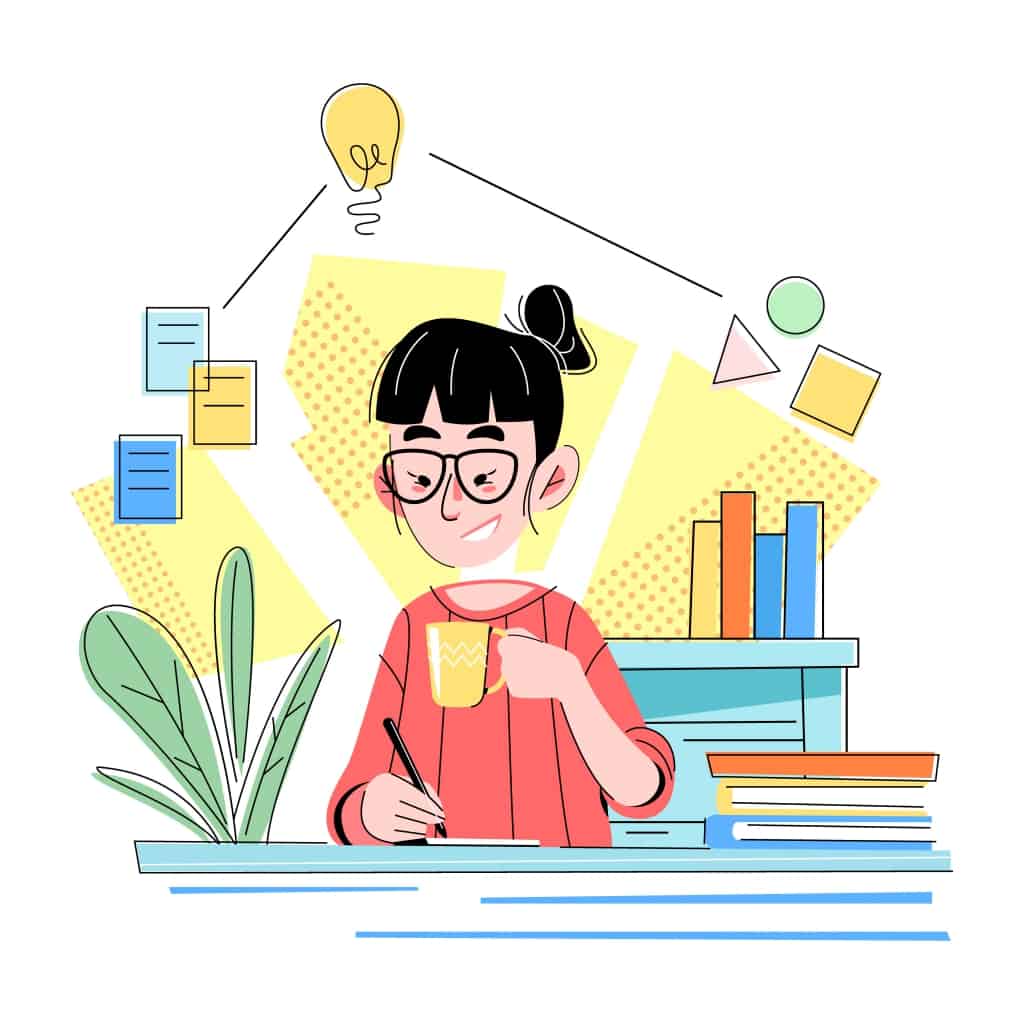- In Education
- In the Workplace
- #1 - Self-Discovery
- #2 - Define Learning Goals
- #3 - Identify Learning Resources
- #4 - Create a Structured Timeline
- #5 - Develop Evaluation and Reflection Strategies
- #6 - Promote Collaboration and Networking
Elevate Your Personal Growth
- Personal Goals For Work
- Professional Development Goals
What is Self-Directed Learning?
Self-directed learning is a powerful educational approach where individuals take control of their learning process, determining what, how, when, and where they acquire knowledge and skills. In self-directed learning, learners are responsible and flexible for:
- Defining their learning goals
- Choosing their learning materials
- Selecting their learning methods
- Assessing their progress
- Pacing their own learning - Go as fast or slow as you need to understand the material.
Key characteristics of self-directed learning include autonomy, initiative, and proactive engagement with the learning materials.
Self-directed learning can occur in various settings, including formal education, workplace training, or personal development. In addition, digital technologies also provide self-directed learners with abundant resources, from online courses and tutorials to interactive platforms and virtual communities, further supporting independent learning.

Why Self-Directed Learning Matters?
Self-directed learning is critical for a multitude of reasons, underscored by insightful research findings:
According to Beardsley et al. (2020), a notable portion of students in a university course lacked the motivation to learn how to learn. This highlights the need to help students not only acquire effective learning skills but also understand what they want to learn. In addition, the significance of students taking ownership of their learning journey extends beyond their university careers, influencing their success throughout their lives. Therefore, incorporating self-directed learning into their educational experiences is essential. (Conley and French, 2014; Case, 2020).
Key Reasons Self-Directed Learning Matters:
Personalized Learning Experience:
Self-directed learning allows individuals to tailor their educational journey to align with their unique needs, interests, and learning styles. This personalized approach fosters a more engaging and effective learning experience.
Encourages Lifelong Learning:
By promoting autonomy and initiative, self-directed learning instills a lifelong learning mindset. Individuals equipped with the skills to direct their learning are better prepared to adapt to the continuous changes and advancements in various fields.
Intrinsic Motivation and Ownership:
In self-directed learning, the motivation to learn comes from within. Learners take ownership of their educational path, leading to a deeper sense of responsibility and commitment to their own growth.
Builds Confidence and Responsibility:
Taking charge of one's learning journey builds self-confidence and a sense of responsibility. Learners become accountable for their progress and achievements, fostering a positive and proactive mindset.
Encourages Exploration and Creativity:
The exploration of diverse resources and methods in self-directed learning fosters creativity. Learners can make unique connections between concepts, encouraging innovative thinking.
Adaptable to Various Learning Environments:
Whether in formal education, workplace training, or personal development, self-directed learning is adaptable to different environments. This versatility makes it a valuable skill applicable throughout various life stages.

When to Opt for Self-Directed Learning?
Deciding whether self-directed learning is the right approach for you depends on several factors and can vary depending on the specific learning goal or context. Here are some situations when self-directed learning can be particularly beneficial:
- Interest and Passion: Are you captivated by a subject or topic that extends beyond conventional educational offerings?
- Time Flexibility: Does your schedule allow for flexibility, enabling you to engage with educational materials at times that suit you best?
- Skill Enhancement Needs: Are there immediate skills you need to acquire or refine for personal or professional growth?
- Curiosity and Intrinsic Motivation: Does a genuine curiosity drive you to explore subjects beyond standard learning materials?
- Certification or Exam Preparation: Are you gearing up for certifications, exams, or professional development that necessitates focused study?
- Preferred Learning Pace: Do you thrive when learning at a pace distinct from traditional classrooms or training programs?
- Abundant Learning Resources: Are there ample online courses and resources available for your chosen subject or skill?
- Desire for Autonomy: Do you excel in independent learning environments, where you can take charge of your educational journey?
- Continuous Professional Development: Is continuous learning imperative for career advancement in your field?
Difference between Self-Directed Learning and Self-Paced Learning
While both self-directed learning and self-paced learning offer flexible and personalized learning experiences, they have distinct differences:
In Education:

#4 - Create a Structured Timeline
When planning your journey, create a timeline that is both flexible and structured.
- Break down your adventure into manageable milestones, transforming your learning journey into an epic saga.
- Create a timeline with realistic deadlines, turning each completed task, module, or project into a victory, fostering a triumphant sense of accomplishment.
#5 - Develop Evaluation and Reflection Strategies
- Craft mechanisms for ongoing evaluation and reflection – the potions ensuring your continuous growth. Assess your progress regularly, adjusting your plan as if you're honing a finely crafted sword.
- Incorporate self-assessment tools, quizzes, or reflective journals, sharpening your skills and gauging mastery of the mystical knowledge you seek.
#6 - Promote Collaboration and Networking
- Connect with peers, mentors, and online communities – form alliances like characters in an epic ensemble.
- Collaborative learning is a great way to enhance your learning experience. It provides opportunities to have discussions, receive feedback, and share insights with others. This can enrich your learning journey and make it more enjoyable.
Final Thoughts
Self-directed learning isn't a one-size-fits-all thing; it's like your very own journey where you pick goals, choose what to learn, and go at your speed. Being in charge makes you responsible and keeps your love for learning going strong.
Now, in the digital world, tools like AhaSlides for learning are like helpful buddies. AhaSlides features and templates help you work together, get into things, and turn learning into an exciting adventure. For the self-directed learner, embracing freedom and curiosity means continually exploring new frontiers, improving skills, and experiencing plenty of "aha" moments. Dive into our templates today! Happy learning! 🚀
FAQs
What are the 5 steps of self directed learning?
- #1 - Self-Discovery
- #2 - Define Learning Goals
- #3 - Identify Learning Resources
- #4 - Create a Structured Timeline
- #5 - Develop Evaluation and Reflection Strategies
Is self directed learning better?
Yes, for many individuals, as it promotes autonomy, tailored learning, and lifelong skills.
What is the self-learning method of teaching?
Teachers facilitate and guide students to independently set goals, choose resources, and learn at their own pace.